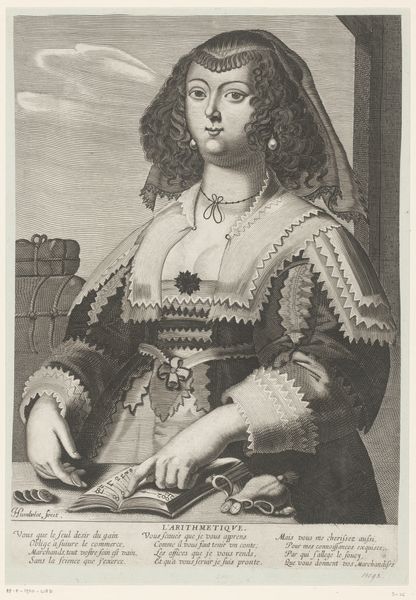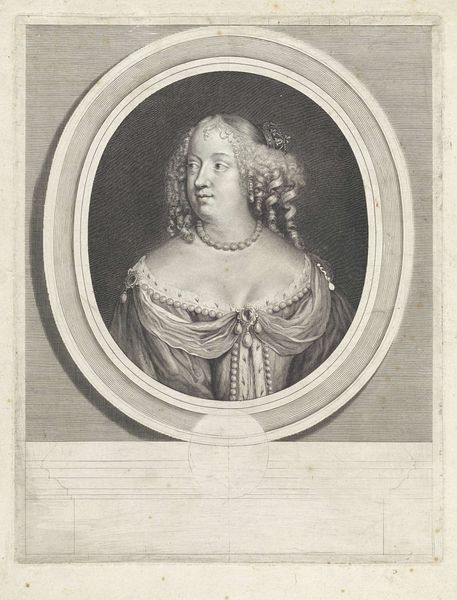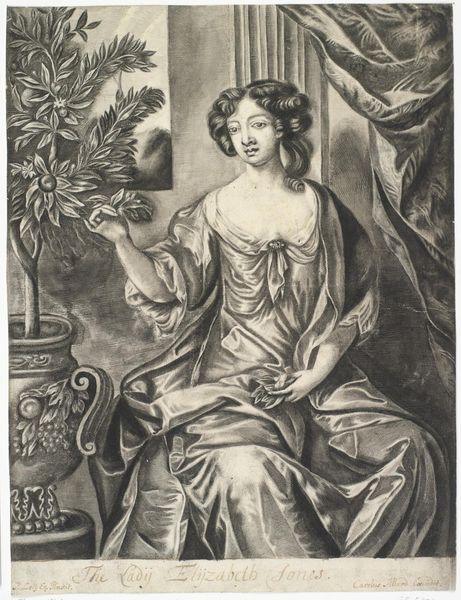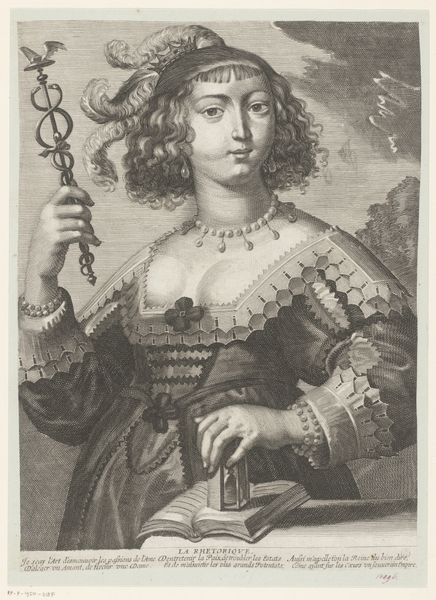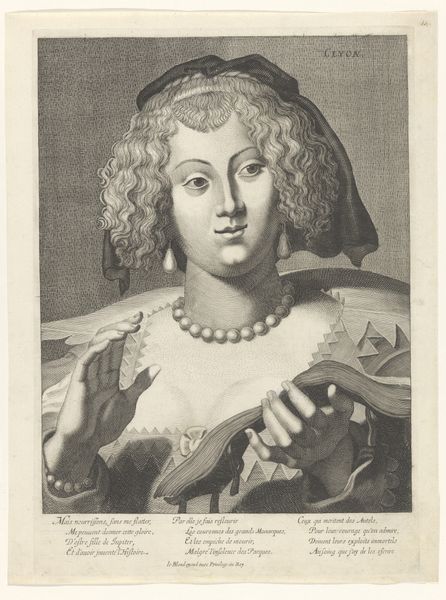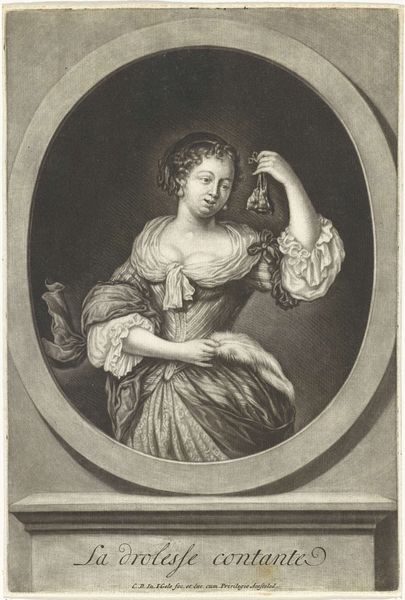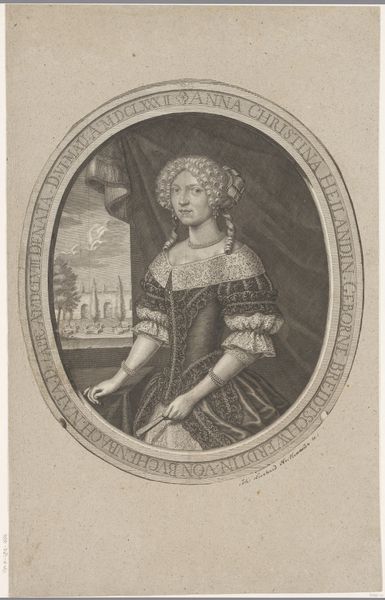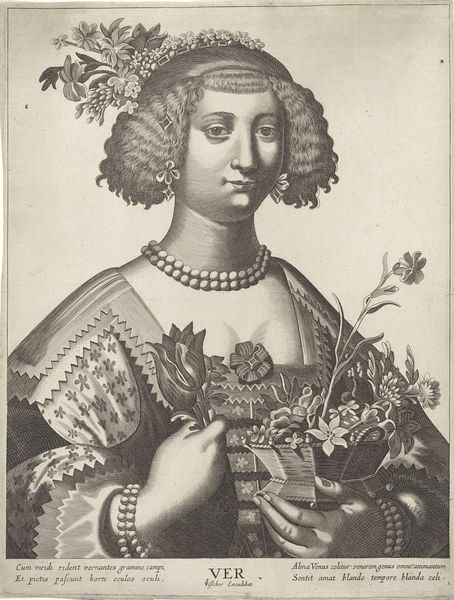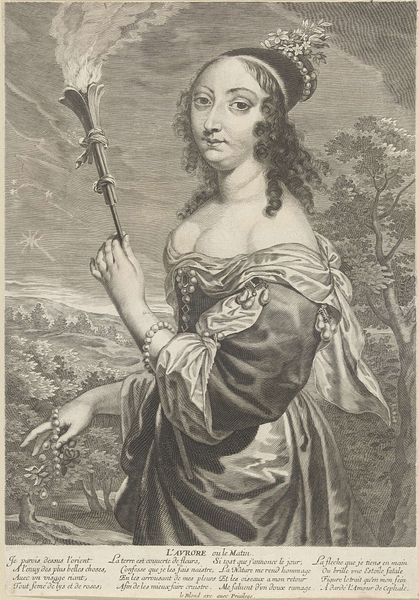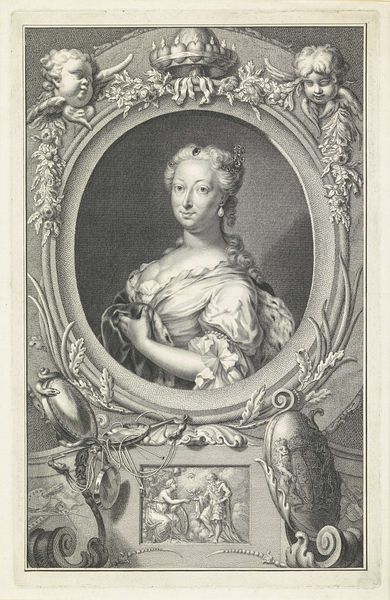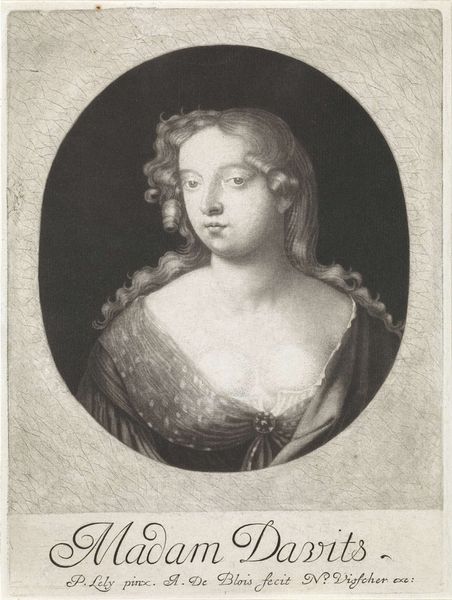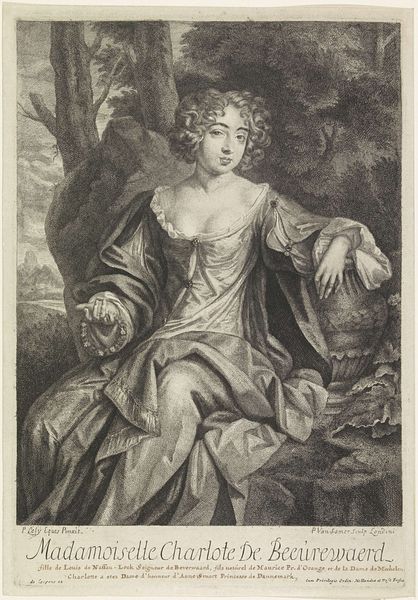
engraving
#
portrait
#
allegory
#
baroque
#
old engraving style
#
caricature
#
portrait reference
#
portrait drawing
#
history-painting
#
engraving
Dimensions: height 366 mm, width 276 mm
Copyright: Rijks Museum: Open Domain
Editor: Here we have "Zomer," or "Summer," an engraving dating sometime between 1612 and 1652, created by an anonymous artist and housed at the Rijksmuseum. It depicts a woman adorned with summer finery. What really strikes me is the incredible detail achieved through the engraving process. I'm curious, what elements of the work draw your attention from a materialist perspective? Curator: Well, first, consider the labor. Engraving is a deeply skilled and time-intensive process. The artist meticulously carves lines into a metal plate. The sheer effort involved in creating these intricate details indicates the value placed on the image, perhaps by a specific patron or for a particular market. Who was buying these, and what did it mean to them to own such an object? Editor: So you're suggesting the medium itself reveals clues about its social context and its place in the art market? Curator: Precisely. The materiality speaks volumes. An engraving like this would have allowed for relatively mass production compared to, say, an oil painting. Consider the paper it’s printed on, and the ink used – where did they come from? How accessible were they? And then, look closer at the woman's attire – the lace, the pearls, the feathered hat. These details aren’t just decorative; they are symbols of wealth and status, also created by skilled labor and made possible through access to certain materials and resources. This isn’t simply about art, it is also about power, privilege, and the consumption of luxury goods. What statement does the wheat on the bottom right makes? Editor: That's fascinating! I hadn't really considered the connection between the actual materials, their availability, and how they reflect broader economic structures of the time. And, how the wheat harvest would relate to it. Curator: Right, everything is connected. This engraving becomes a window into understanding not just artistic skill but also trade routes, labor practices, and social hierarchies in 17th-century Europe. Editor: I see that much clearer now! The medium truly is the message in a way I hadn’t fully grasped. Thank you!
Comments
No comments
Be the first to comment and join the conversation on the ultimate creative platform.
